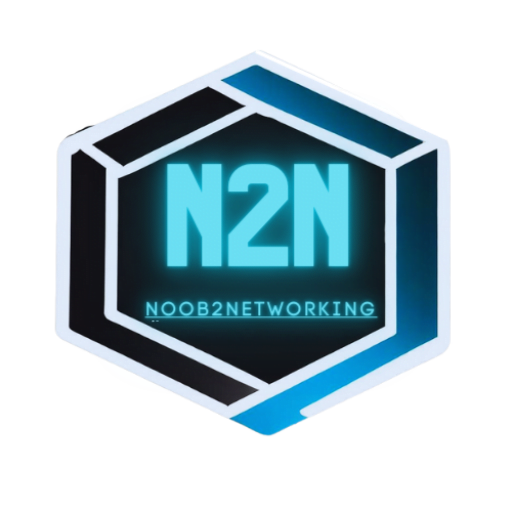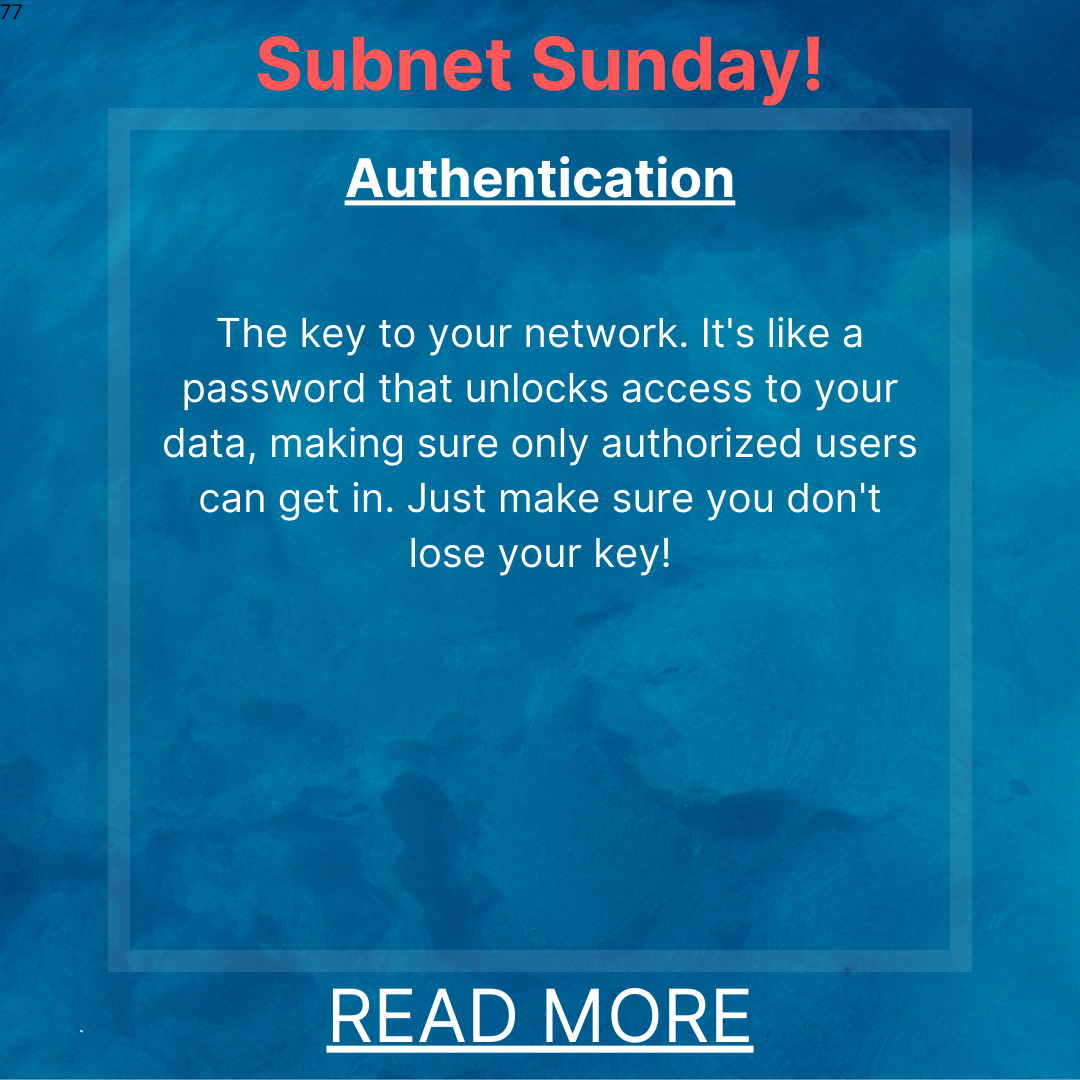Welcome to Subnet Sunday, where we unravel the mysteries of authentication in a fun and humorous way. In this edition, we’ll take you on a journey through the colorful world of proving your identity on the network. Using relatable analogies, playful emojis, and a touch of wit, we’ll demystify authentication and make it accessible for novice readers. So, get ready to don your digital passport and embark on a hilarious adventure of proving who you are in the vast realm of networking! 🎭🔒💻😄
Chapter 1: The Identity Puzzle – What is Authentication? 🧩🔑
Imagine you’re at the entrance of a top-secret club, and the bouncer demands to see your ID. In the digital world, authentication is like proving your identity to gain access to a network or a specific service. It ensures that only authorized individuals can enter the realm of digital wonders.
Authentication typically involves three main factors:
- Something You Know – Passwords: Just like recalling a secret passphrase to impress the bouncer, passwords are the most common form of authentication. They act as the first line of defense, so make sure your passwords are strong and unforgettable, just like a catchy dance move!
- Something You Have – Tokens and Devices: Picture having a special keycard or an exclusive club membership card. These physical tokens and devices serve as additional authentication factors. From key fobs to smart cards, these tangible items enhance the security of your digital identity.
- Something You Are – Biometrics: Imagine scanning your fingerprint or looking into a futuristic eye scanner. Biometric authentication relies on unique physical or behavioral traits like fingerprints, retinal scans, or even voice recognition. It’s like having your own digital superhero power!
Combining these factors creates a robust authentication process that ensures only authorized individuals gain access.
Chapter 2: The Bouncer’s Toolkit – Authentication Methods and Techniques 🕺🔓👮♂️
Just like a bouncer’s toolkit, there are various methods and techniques to authenticate users in the digital world. Let’s explore a few of them:
- Username and Password Dance: It’s the classic dance routine where you enter your username and password. This method is simple and widely used, but be sure to come up with a strong password to keep those intruders at bay!
- One-Time Password (OTP) Shuffle: Like a special dance move that you can only do once, OTPs provide temporary passwords that expire after a single use. They add an extra layer of security to your authentication routine.
- Smart Card Cha-Cha: Imagine inserting a smart card into a reader, just like presenting your dance card to a partner. Smart cards store your digital identity and can be used for authentication, making it harder for intruders to join the dance floor.
- Biometric Boogie: Put on your best biometric moves! Biometric authentication relies on unique physical traits like fingerprints, facial recognition, or even iris scans. It’s like dancing to the rhythm of your own unique beat!
These authentication methods, combined with the three factors mentioned earlier, create a dynamic and entertaining performance of identity verification.
Chapter 3: The Dance of Two Partners – Two-Factor and Multi-Factor Authentication 💃🕺🔒
Sometimes, one dance partner isn’t enough to create a secure connection. That’s where two-factor and multi-factor authentication come into play. Let’s hit the dance floor and explore these dynamic duos:
- Two-Factor Tango: Just like a dynamic duo performing a graceful tango, two-factor authentication (2FA) combines two different authentication factors. For example, you might enter your password (something you know) and receive a verification code on your phone (something you have). It’s a powerful dance that adds an extra layer of security.
- Multi-Factor Madness: It’s time to unleash the full force of authentication! Multi-factor authentication (MFA) goes beyond two factors and involves using multiple authentication methods simultaneously. It’s like a wild dance party where you show your ID, use a fingerprint scanner, and enter a temporary passcode. This multi-layered approach ensures a high level of security for your digital adventures.
By embracing the dance of two-factor and multi-factor authentication, you’ll be waltzing through the digital realm with confidence, knowing that your identity is protected.
Chapter 4: Beyond the Dance Floor – Authentication Protocols and Standards 💃🌐🕺
Just like different dance styles have their own unique moves, the world of authentication has its own protocols and standards. Let’s take a quick peek at a few popular ones:
- OAuth – The Dance of Authorization: OAuth is like a special dance where you authorize third-party services to access your information without revealing your password. It’s widely used for granting permissions to social media platforms and other apps, allowing them to join your dance party without compromising your security.
- OpenID Connect – The Dance of Identity: OpenID Connect is like a grand ball where you can use your existing social media accounts to authenticate on other websites. It simplifies the authentication process, making it as easy as waltzing from one website to another with your trusted identity intact.
- Security Assertion Markup Language (SAML) – The Dance of Trust: SAML is like an elegant group dance, enabling secure authentication and authorization between different organizations. It allows for seamless collaboration while maintaining trust and security across partner networks.
These authentication protocols and standards provide a structured and reliable framework for authenticating users and securing digital interactions.
Chapter 5: The Dancefloor Security – Best Practices for Authentication 🔒💃🔐🕺
Now that we’ve explored the whimsical world of authentication, it’s time to take a closer look at some best practices to keep your dance floor secure:
- Choose Complex Password Choreography: Create strong and unique passwords that are hard to guess. Avoid using common phrases or personal information and consider using a password manager to help you remember those intricate dance moves.
- Keep Your Dance Card Up to Date – Regular Updates: Just like a well-choreographed dance routine, keep your software and applications updated with the latest security patches. This ensures you have the most secure dance floor possible.
- Don’t Show Off Your Dance Moves Everywhere – Limited Access: Grant access only to those who truly need it. Apply the principle of least privilege, ensuring that users have the minimum permissions required to perform their tasks. Don’t let everyone join the dance party unless they have a legitimate reason!
- Watch Out for Phishing Dance Tricks: Be wary of phishing attempts that try to steal your credentials. Avoid clicking on suspicious links or providing personal information unless you’re absolutely sure about the legitimacy of the request. Stay alert and dance away from those sneaky moves!
- Embrace the Power of Two-Factor Authentication: Add an extra layer of security by enabling two-factor authentication wherever possible. It’s like having a dance partner who always has your back!
By following these best practices, you’ll be twirling on a secure dance floor, ensuring that only authorized dancers join the party.
Conclusion: Dance Your Way to Secure Access! 💃🔒💻😄
As we wrap up this joyous dance through the world of authentication on this Subnet Sunday, we hope you’ve gained a new appreciation for the importance of proving your identity on the network. Just like dancing, authentication can be both fun and secure when you have the right moves and measures in place.
Remember, whether it’s a password tango or a biometric boogie, authentication plays a vital role in securing your digital adventures. So put on your dancing shoes, embrace the rhythm of authentication, and twirl your way to a safer and more confident digital experience!
Stay tuned for our next Subnet Sunday, where we’ll explore another exciting aspect of networking with our signature blend of humor and education. Until then, keep dancing securely and keep the network groove alive! 💃🎶🔒🌐😄


5 responses to “Subnet Sunday: Authentication – Proving Your Identity on the Network”
Alright, so I downloaded the 8jililoginapp app. It’s not bad! Makes it super convenient to play on my phone. Could be a little smoother, but overall a solid experience. Here’s the link: 8jililoginapp
Yo, 33dgame is legit! Been playing here for weeks and haven’t had any issues. Definitely worth a look if you’re into this stuff 33dgame
Threw some bets down on Pixluckbet. Interface is clean and easy to understand. The odds seem pretty competitive. Worth checking out and seeing if lucks on your side with pixluckbet.
789clubios is where it’s at if you’re on iOS, like me! Game’s smooth, easy to use and can play wherever you are. Defo recommend it, brothers. 789clubios
Thanks for sharing. I read many of your blog posts, cool, your blog is very good. https://www.binance.info/bn/register-person?ref=WTOZ531Y